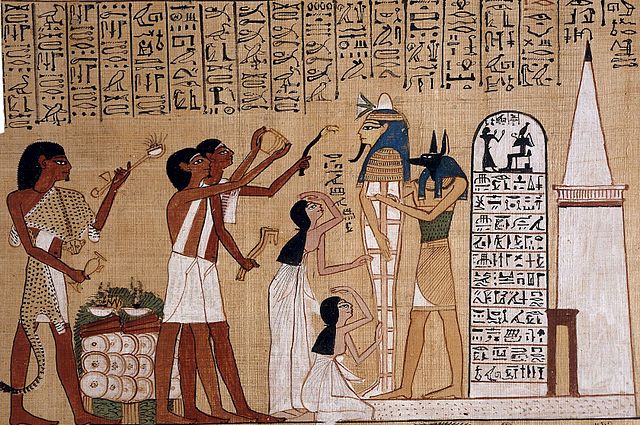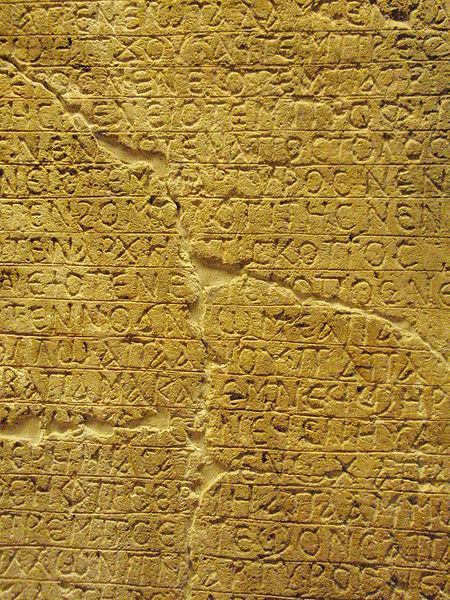Anubis, also known as Inpu, Inpw, Jnpw, or Anpu in Ancient Egyptian, is the god of funerary rites, protector of graves, and guide to the underworld, in ancient Egyptian religion, usually depicted as a canine or a man with a canine head.
Anubis attending the mummy of the deceased.
Portable shrine of Anubis, exposition in Paris, from the Tomb of Tutankhamun (KV62)
Hermanubis in the November panel of a Roman mosaic calendar from Sousse, Tunisia.
The Opening of the Mouth ceremony being performed on a mummy before the tomb. Anubis attending the mummy of the deceased. Extract from the Papyrus of Hunefer, a 19th-Dynasty Book of the Dead (c. 1300 BC)
Coptic is a group of closely related Egyptian dialects, representing the most recent developments of the Egyptian language, and historically spoken by the Copts, starting from the third century AD in Roman Egypt. Coptic was supplanted by Arabic as the primary spoken language of Egypt following the Arab conquest of Egypt and was slowly replaced over the centuries. Coptic has no native speakers today, although it remains in daily use as the liturgical language of the Coptic Orthodox Church and of the Coptic Catholic Church. Innovations in grammar and phonology and the influx of Greek loanwords distinguish Coptic from earlier periods of the Egyptian language. It is written with the Coptic alphabet, a modified form of the Greek alphabet with several additional letters borrowed from the Demotic Egyptian script.
Fifth–sixth century Coptic liturgic inscription from Upper Egypt.
Papyrus Bodmer VI ("Dialect P") possesses the richest of all Coptic alphabets, with 35 unique graphemes.
Sandstone stela, inscribed with Coptic text. The names Phoibammon and Abraham appear. From Egypt, find spot unknown, date known. The British Museum, London
Coptic and Arabic inscriptions in an Old Cairo church








